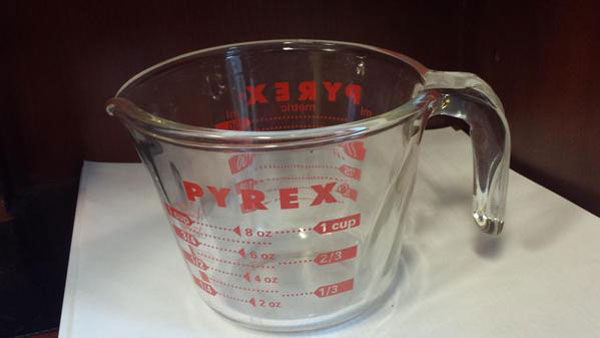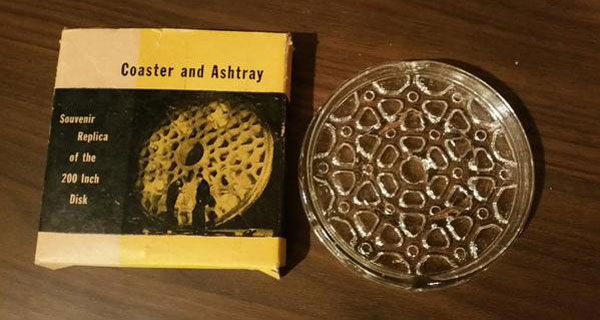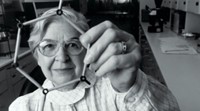Advertisement
Grab your lab coat. Let's get started
Welcome!
Welcome!
Create an account below to get 6 C&EN articles per month, receive newsletters and more - all free.
It seems this is your first time logging in online. Please enter the following information to continue.
As an ACS member you automatically get access to this site. All we need is few more details to create your reading experience.
Not you? Sign in with a different account.
Not you? Sign in with a different account.
ERROR 1
ERROR 1
ERROR 2
ERROR 2
ERROR 2
ERROR 2
ERROR 2
Password and Confirm password must match.
If you have an ACS member number, please enter it here so we can link this account to your membership. (optional)
ERROR 2
ACS values your privacy. By submitting your information, you are gaining access to C&EN and subscribing to our weekly newsletter. We use the information you provide to make your reading experience better, and we will never sell your data to third party members.
Materials
Pyrex At 100
Corning’s century-old glass innovation has had a revolutionary impact on cooking and chemistry
by Stephen K. Ritter
May 18, 2015
| A version of this story appeared in
Volume 93, Issue 20

Check out historic Pyrex photos at http://cenm.ag/pyrex100.
Before heading out the door after a day of research at Corning Glass Works in 1913, physicist Jesse T. Littleton grabbed the sawed-off bottom of a round borosilicate glass battery jar. He did so at the behest of his wife, Bessie, who had broken her ceramic baking dish. Bessie used the ersatz dish to cook up a sponge cake, one that turned out uniformly shaped and so light and perfectly browned that Littleton knew he had something special on his hands.

Corning took the baking discovery and turned it into Pyrex, a much-loved brand of glass baking dishes, measuring cups, and storage containers for the kitchen. The same qualities that made Pyrex ideal for cookware—transparency, temperature resistance, and chemical inertness—were also ideal qualities for laboratory and industrial glassware. So Corning also introduced Pyrex beakers, Erlenmeyer flasks, and graduated cylinders for the lab, as well as pipelines and reactor liners for manufacturing plants.
Corning is spending this year celebrating the 100th anniversary of the commercial launch of Pyrex, arguably one of the most important technological developments in the history of materials science.
“What an invention!” says Columbia University chemistry professor Ronald Breslow, a past-president of the American Chemical Society. It’s hard to believe that a single material, Pyrex, has dominated laboratory chemistry for 100 years, Breslow adds.
Turns out there is a bit more to the Pyrex development story than just a good sponge cake, says Jeff Sauer, business director of laboratory glass at Corning Life Sciences. Corning had started out 60 years earlier as a company specializing in industrial glass and ceramics, Sauer explains. The company’s forte was glass lenses for signaling lamps used by railroads.
When the first commercial lightbulbs came along in the 1880s, Corning was there to produce teardrop-shaped glass globes to protect the filament. And the company’s glass tube technology later helped bring radio and then television to the masses. Pyrex was an extension of those developments.
The borosilicate glass from which Pyrex was born was first made by German chemist and glassmaker Otto Schott in 1893. Borosilicate glass is typically made by fusing sand (silica) and borax (sodium borate) in a hot furnace followed by shaping the molten material by hand or machine. Schott’s company began selling the glassware under the name Duran. Before Schott, firms used soda (sodium carbonate) and lime (calcium oxide) to make glass, but incorporating boron oxide from borax reduces the material’s coefficient of thermal expansion, meaning it can better withstand dramatic changes in temperature.
In 1908, Eugene C. Sullivan, Corning’s first director of research, developed Nonex glass—short for nonexpansion—a variation on borosilicate glass designed especially for railroad lamps. “What made Nonex suitable for railroad lenses is that the glass can withstand the intense heat from the light source on the inside and the sometimes extreme cold and wet weather on the outside,” Sauer says.
Nonexpansion was a great property, Sauer notes, but it made the product too durable. The glass lasted for a long time, which reduced the number of reorders and affected sales. “Corning scientists had to come up with other applications for the resilient glass to help the company stay in business.”
That’s where the Littletons figure in. The glass that Bessie used to bake her sponge cake contained too much lead, making it unsuitable for kitchenware. But once the Corning team got the lead out, a star was born.
“By 1915, people were cooking in glass,” Sauer says. “At the time, that was unheard of.”
Lab glassware was a different story. Before 1915, lab glass was primarily made in Germany and Austria, Sauer adds. But the outbreak of World War I cut off American scientists from their supply. “The war created a sudden, great market need for laboratory glass,” Sauer says. Corning met that need by selling Pyrex labware.
By the end of the war in 1918, made-in-America glass cookware and labware were firmly established, and Corning was the leading supplier. Pyrex wasn’t just replacement glassware for American scientists, it turned out to be superior: In 1918, the U.S. Bureau of Standards gave Pyrex a higher rating than any other brand of lab glassware.
After its launch, Pyrex became part of a string of laboratory successes, Sauer says. One famous Pyrex user was Charles A. Lindbergh, known for his daring 1927 solo airplane flight from New York to Paris aboard the Spirit of St. Louis. Lindbergh had studied engineering before dropping out of college to be a flyboy. After crossing the Atlantic, he worked in the lab of Nobel Prize-winner Alexis Carrel at Rockefeller Institute, in New York City.
Lindbergh created glass devices that could be heat-sterilized and used to culture cells or to pump fluids through organs to keep them functioning before transplants. Lindbergh’s glass perfusion pump, a forerunner of machines used in operating rooms today, is credited with helping make heart surgery and organ transplants possible.
FROM THE C&EN ARCHIVES
Read a 1943 C&EN report on the development of Pyrex, as well as other past C&EN stories about glassware
The famous glass figured into another notable development in the early 1940s, when scientists used Pyrex Fernbach flasks to grow mold to produce penicillin and Pyrex rubber-stoppered bottles to package the antibiotic during its initial mass commercialization. And in the 1950s, Jonas Salk grew the original cultures for his polio vaccine in Pyrex Fernbach flasks.
Because it remains stable in the face of thermal fluctuations, Pyrex is often the material of choice for reflective optics in astronomy, Sauer adds. In the mid-1930s, the Hale Telescope at the Palomar Observatory, in California, was built using a 200-inch, 20-ton Pyrex disk. At the time, it was the largest piece of glass in the world.
In addition to research successes, the first radio message from the South Pole was transmitted over antennas made with Pyrex glass insulators. And Pyrex glass windows flew aboard the Project Mercury spacecraft in the U.S.’s first human spaceflight program.
“Pyrex has been essential to cooking and chemistry,” says Catherine T. (Katie) Hunt, a retired R&D director at Dow Chemical and an ACS past-president. “Whether cooking up my favorite chocolate sauce in a microwaveable Pyrex measuring cup or synthesizing a new material in a three-neck round-bottomed flask, whether scaling up a plant production run in a glass-lined vessel or scaling down to a lab-on-a-chip biomedical device for genomic testing and individualized medicine applications—thank you, Corning, for enriching our labs and our lives with Pyrex!”
Although Corning’s Pyrex remains a venerable lab product, Pyrex cookware is no longer manufactured by Corning. The firm divested its consumer products division in 1998, licensing World Kitchen to make and sell Pyrex glass and CorningWare ceramic products for the home. Pyrex cookware sold today in North America has also changed—it’s made of less expensive soda-lime glass now, rather than the original borosilicate glass.
A utilitarian invention like Pyrex will always remain important for day-to-day home cooking and chemical and biological lab work, Sauer believes. But he admits innovation has its limits after 100 years. “Lab glassware is a mature product line, so a beaker or flask from 100 years ago is virtually unchanged.”
Corning has moved on to use its early achievements in glass to develop newer products, such as optical fiber for high-speed Internet and scratch- and fracture-resistant Gorilla Glass to protect smartphone screens. But Sauer says it’s a rare day when he doesn’t grab some Pyrex. “I was just drinking my coffee out of a 400-mL Pyrex beaker mug this morning,” he says.
Pyrex Through The Years
Start the slide show to visually explore the storied history of this ubiquitous material.
Dear Reader:
Has this article inspired you to look for Pyrex in your lab or kitchen? Share photos with us of how you use the wonder material. Submissions will be posted below.
Trouble with this form? Send an email to webmaster.cen@acs.org with the
following information: Your Name, your submission, photo and credit.
Michelle Francl

Atmosphere for a general chem lecture on phase changes.
Celia Arnaud

My main use for Pyrex is as measuring cups. Lab days long gone.
Justin Brower (aka NaturesPoisons on Twitter)

Pyrex is handy for holding office supplies.
Steve Ritter

My morning tea.
Deirdre Lockwood

I seldom post food pics, but the 100th anniversary of Pyrex demands it (pizza not shown).
Brett Schaerer (aka astrobug75 on Twitter)





Join the conversation
Contact the reporter
Submit a Letter to the Editor for publication
Engage with us on Twitter